 Some companies move boxes. Some companies focus on the product and push it at you relentlessly. From its outset, Capture Integration has done our best to be something different in the market. We concentrate on growing long term partnerships with our customers based on core principles. We take the concept of partnership seriously, and we know the best building block of this foundation is our people. Having the most trustworthy and knowledgeable staff in the industry is a relentless task. And we feel strongly that we deliver on this promise with the amazing team that we have assembled through the years.
Some companies move boxes. Some companies focus on the product and push it at you relentlessly. From its outset, Capture Integration has done our best to be something different in the market. We concentrate on growing long term partnerships with our customers based on core principles. We take the concept of partnership seriously, and we know the best building block of this foundation is our people. Having the most trustworthy and knowledgeable staff in the industry is a relentless task. And we feel strongly that we deliver on this promise with the amazing team that we have assembled through the years.
By investing in our support team, we are able to set the standard of what other companies are judged by. This is proven by our multiple awards in the industry and the incredible feedback that we receive from our customers both online and in person. Now we could bore you with technical knowledge and degrees that each person in our support staff have earned but again, this is not who we are. We are real people. And relationships are what we care about. So please enjoy these personal profiles of the people that make Capture Integration award winning support what it is today.
Anthony Festa
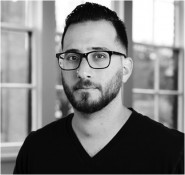
As our fearless technical support manager and rentals leader, you’re wearing a lot of hats. What do you see as one of your best accomplishments since joining Capture Integration, and consequently, one of the things you want to best offer our clientele in the future?
I would have to say customer advocacy and taking care of customer needs. We fight hard for our customers and make sure they are taken care of on all accounts, especially in support. We champion for them to make things right, and push to make it happen whenever needed. It’s an advantage that buying from a big box shop does not afford.
Everyone in a tech support capacity sees common issues or problems that they wish they could preemptively change, be it cable management, power concerns, improper Capture One setups to the simple “did you try turning it on and off again?” What sort of issues would you say you see the most, or the most common things you wish you could be on set to head off?
I would have to say that low power would have to be the issue that we often come across most. Be that low power in the camera and or digital back, or low power to the computer on tethered shooting. Keep your batteries in the camera fresh and change them often. Proper power is extremely critical when tethered to the new Macs when going though Thunderbolt as well. Be it battery powered from the back, or a powered hub to help keep things humming and that data flowing from back to computer smoothly.
The next would likely be tether cables. We often see folks who are having issues shooting tethered, but no spare cables to switch to. I recommend having at least two spares of each if you are on an IQ or Credo. Cables get bent, stepped on and can fail easily.
With 10 years of freelance tech and digital capture services under your belt in New York City, how have you seen the industry change and where do you feel yourself most excited about the future and trends in gear or photography?
It’s amazing how far things have come since I started; the megapixel race, live view, CMOS chips for medium format duty and Capture One Pro advancing to levels of greatness and more mainstream acceptance. I am honestly excited for the day where I no longer need to use Photoshop and can do everything start to finish in there.
A fan of fast cars and hot rods, you’ve travelled to New York for several years now to photograph hot rod meetups, along with soupin’ up your own Volkswagen. Any big petrolicious plans for the future, be it new cars to shoot, new cars to fix, or photos to share?
I’ll be back at my favorite event, The Hardcore Happening, in Western NY this August for sure and plan to make another photo book on it. There are a few more hot rod events and nostalgia drags I want to get to, like The Race of Gentlemen and The Jalopy Jam Up, but with them being so far away it remains to be seen if I can make it. I will definitely be hitting up any local Southeast events that happen with a camera in tow for sure. While the VW is always a step away from being sold, it is my project car these days. I’m looking to do some SCCA Autocross this Spring, so it could certainly get interesting.
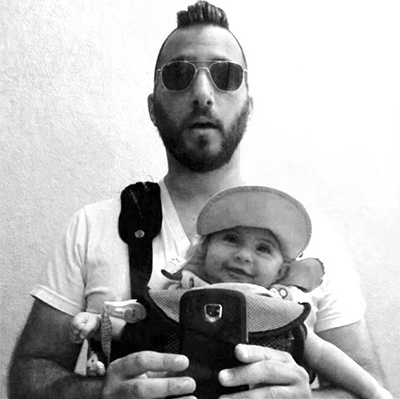
Anthony and his daughter, Mia.
Josh Booth
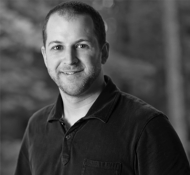
Much of your work with the company is focused on teaching, providing technical examples, and one-on-ones with our clients. What’s driven this proactive approach from a more traditional inbound customer support workflow?
Part of what has driven this approach is my own desire to learn. I love learning new things (especially in Capture One Pro) and pushing the limits of the software to see what it can do & what else I can make it do. The best way to learn, they say, is to teach it! Also, the more information and training I can get out there for users to see and learn, they can better troubleshoot and solve problems on their own. The result is the customer has more confidence, and I have less tech support calls, freeing me to create more content!
You’ve previously been to Iraq in 2003 during Saddam’s capture, been across the United States for Landscape work, and also do street photography around Atlanta. As time goes on, and you work with more varied photographers via Capture Integration, do you see your work changing? What direction do you want to pursue with your work in the future?
I would hope my work is getting better! As a perk of working for Capture Integration, I have access to the best gear in the industry. As I am using this gear, I want to take full advantage of its capabilities, so my approach has changed more than my work. Overall my work has a couple of fairly consistent themes which hasn’t changed, but I tend to think through the shots more thoroughly. Yet, I’m not running off to a war zone anymore! However, I would say that as I continue to view the incredible images created by our customers, my post-processing approach has definitely changed – going from a more basic editing mindset to using more creative effects and styles.
As far as the future is concerned, I want to continue exploring some of my present themes – stillness, resilience, and human dignity (especially during suffering). I’d like to get back into more studio/strobe environments vs just natural light / photojournalistic approaches. Also, with a baby boy on the way, there will be many, many photos of him. 🙂
What’s your favorite part of working with Capture Integration? Focusing on software? Working with clients? Expanding our lecture circuit?
My favorite part of working with Capture Integration is two-fold: I love working with our customers and seeing the incredible images they create. Creativity inspires creativity. I love it when a customer sends me an image to look at – even when they don’t need technical support – but just to share what they have created. I also absolutely love teaching – whether teaching 8-hour classes or individual training sessions… My day is made when a customer starts to put things together and has one of those “A-ha!” moments.
Any guilty pleasures you use to relax after work?
Guilty pleasures? I’m ADHD, so it could be anything… currently it’s working with my new motorcycle, watching survival shows while eating Oreos with my wife, chasing my dogs around the yard, iOS programming (I’m a nerd), and tackling the ever-growing honey-do-before-the-baby-comes list.
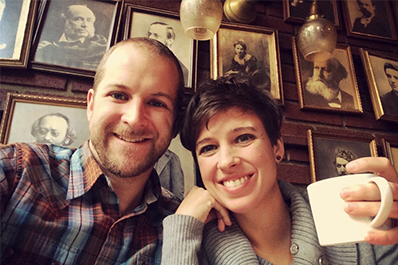
Josh and his wife Bethany.
Chris Valites
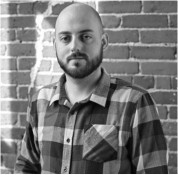
Upon joining the team, you were introduced to the great, yet complex world of technical cameras. Since you’ve paired this workflow with your weekend hiking, can you share your first impressions of the tech camera workflow?
Before I had joined Capture Integration, I had never had any experience (direct or indirect) with tech cameras, but I’ve found that my past has helped out a lot. In college, my graduating class was one of the last ones to do any work with 4×5 studio rail cameras. Learning the scheimpflug principle, as well as the slower, more meticulous nature of both 4×5 and tech cameras has made the transition relatively painless. I will say that it’s nice not to have to struggle with a dark cloth and loupe, especially at any of the windier peaks I’ve been on! I’m looking forward to using the new year and new snowshoes to get out even more and more fully familiarize myself with our equipment, as well as add to my growing landscape collection.
With your history at Pocket Wizard and schooling at RIT, you are extremely interested in strobe lighting, timing and the technical details of studio lighting. What studio lighting item could you not live without on your shoots?
Funnily enough, boom arms. Be it a motorcycle shot, product shot, or portrait, a boom arm is singlehandedly the easiest way to differentiate your work from the guy who has a normal stand and the same light you do. I find it’s easier to start lighting from the top down – because it gives you the ability to spotlight what you want to showcase, and then you can add fill to decrease the contrast or drama as you see fit. (Although, I suppose you could say that since I use boom arms, sandbags are the one item I could not live without…)
As someone who enjoys the outdoors, be it hiking, skiing, or in your Jeep, what is you favorite getaway to unwind?
There’s absolutely nothing in my life I enjoy more than getting out on a mountain. If it’s skiing or hiking, being on top of a mountain, or winding my way down through the trees, there’s something absolutely calming about being surrounded by gorgeous vistas and views that go on forever. Being able to see these massive parts of our world, things that don’t care about Monday conference calls or the electric bill, that is something that will truly help me get my head cleared.
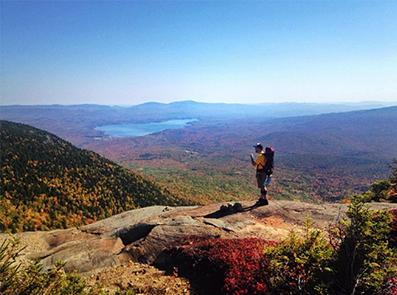
Chris hiking Mount Tumbledown